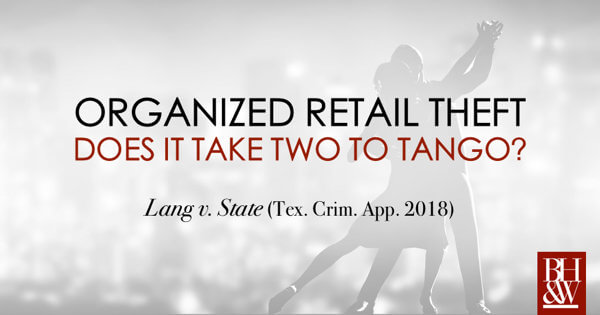 “Knock, knock!”
“Knock, knock!”
“Who is there?”
“The police and the FBI, may we come in please?”
There is a knock at the door. You look out your peep hole and see law enforcement. Do you have to open your door? If you open your door, do you have to let them in? What if they don’t have a warrant, but ask nicely and start talking to you? If you give consent to law enforcement to enter your home, can evidence seized be used against you in court later on?
This article is a summary of United States v. Danhach, a case recently decided in the US Court of Appeals for the 5th Circuit.
Evidence is Seized After Police Politely Ask If They Can Come Inside.
The Houston Police Department and the FBI had been investigating Sameh Danhach and his business associate for possible involvement in organized retail theft. As part of the investigation, law enforcement began surveilling a warehouse that Danhach had been seen entering on multiple occasions and to which a car used in stealing over-the-counter drugs and expensive baby formula had been linked. After several weeks of surveillance, law enforcement approached the warehouse and knocked on the door. Danhach’s business associate permitted the officers to enter, as surveillance cameras rolled capturing the entire conversation.
The officers saw trash bags full of merchandise and other indicators of stolen goods out in the open. Citing this evidence in a probable cause affidavit, law enforcement obtained a search warrant and seized the evidence for trial. Danhach was charged with conspiracy to transport stolen goods in interstate commerce and also with aiding and abetting the interstate transportation of stolen OTC medication and baby formula, violations of 18 U.S.C. § 371 and 18 U.S.C. § 2314, among other charges.
At trial, the jury found Danhach guilty on all counts and the judge sentenced him to 151 months in prison and a three year term of supervised release. Danhach appealed.
The Knock and Talk Procedure, the Plain View Doctrine and Consent Collide.
Courts have recognized the “knock and talk” technique as “a reasonable investigative tool when officers seek to gain an occupant’s consent to search or when officers reasonably suspect criminal activity.” United States v. Jones, 239 F.3d 716, 720 (5th Cir. 2001); Kentucky v. King, 563 U.S. 452, 469 (2011). Evidence may be cited in support of a search warrant if (1) law enforcement entered the area where the item was located; (2) the item was in plain view; (3) the incriminating nature of the item was immediately apparent; and (4) law enforcement had a lawful right of access to the item.” United States v. Jackson, 569 F. 3d 236, 242 (5th Cir. 2010).
However, if for some reason the “plain view” doctrine does not stand up to the facts of a case, then “consent to enter” may be an alternative argument, but “the government must demonstrate that there was effective consent that was given voluntarily by a party with actual or apparent authority.” United States v. Scroggins, 599 F.3d 433, 440 (5th Cir. 2010).
The Big Issue Before the Fifth Circuit was Whether Officers Lawfully Entered and Remained Inside of Danhach’s Warehouse While Conducting a “Knock and Talk” Interview.
Here, the Fifth Circuit agreed with the district court and affirmed judgment and sentencing, holding that law enforcement permissibly used the knock and talk technique. The Court pointed out that video surveillance is consistent with law enforcement’s account that consent was obtained before entering. Even after law enforcement entered, Danhach’s business associate gave them permission to walk around the warehouse. The stolen goods were in plain view and were immediately apparent and indicative of criminal activity. Based on this series of events, “even if any evidence cited in the warrant…was not covered by the plain-view doctrine, the record supports the conclusion that the agents asked for and received consent for a full search of the warehouse.” Danhach did not offer any evidence to show that the consent was coerced in any manner, nor did he offer any evidence that the items seized were not in plain view.
Consent to Search + Items of Criminality in Plain View = Probable Cause to Obtain a Warrant
In sum, law enforcement may ask to enter a premises without a warrant and if consent is obtained from a person who is “in charge” or who looks to be “in charge,” then that consent is sufficient according to the Fifth Circuit, citing previous cases. Once lawfully inside a dwelling or premises, if law enforcement officers see, in plain view, objects that are linked or are seemingly linked to a crime, then those items may be the basis of a warrant to seize the items and to conduct an even more extensive search.










